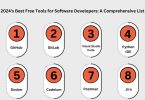Edge Computing: The Backbone of the IoT
The Internet of Things (IoT) is rapidly evolving, generating vast amounts of data from interconnected devices. To harness the full potential of IoT, organizations need a way to process this data efficiently and in real-time. This is where edge computing comes into play.
By bringing computation and storage closer to the data source, edge computing revolutionizes how IoT devices operate. This decentralized approach significantly reduces latency, optimizes bandwidth usage, and enables swift, data-driven decisions. As a result, IoT systems become more responsive, intelligent, and capable of adapting to changing conditions.
Essentially, edge computing is the foundation upon which the IoT can truly thrive. It empowers devices to make informed decisions independently, while also providing valuable insights for centralized management and analysis.
The Internet of Things Requires Edge Computing
Data creation from sensors and devices in a variety of situations has increased dramatically as a result of the Internet of Things’ rapid proliferation. It is frequently impractical to transmit all of this data to a central data center because of network constraints and the requirement for real-time data processing. In order to overcome these obstacles, edge computing allows for local data processing, which facilitates quicker and more effective data management.
The Workings of Edge Computing
Conventionally, information produced at an endpoint is routed to a central data center for handling and then transmitted back to the endpoint. Edge computing, on the other hand, processes data close to its source. With this method, raw data is processed locally and only the most important insights are sent back to the central data center, as opposed to being forwarded to a central hub.
IoT Applications for Edge Computing
Real-time insights and actions at the data source are made possible by Edge Computing, which is transforming a number of sectors. The following are some important applications:
- Autonomous vehicles: Autonomous vehicles benefit greatly from edge computing. By processing sensor data locally, rather than relying solely on the cloud, these vehicles can make critical decisions in real-time. This approach significantly reduces the volume of data transmitted to remote servers, leading to faster response times and improved overall performance.
- Smart Grids: By analyzing data locally from sensors on transformers and electrical lines, utilities may anticipate outages, identify defects, and optimize the distribution of electricity.
- Predictive Maintenance: Predictive maintenance lowers maintenance costs and downtime by using edge devices to examine sensor data from machines before any issues arise.
- Healthcare: Quick analysis of patient data via sensors and wearable technology enables prompt medical intervention.
- Smart Cities: Efficient management of public services and traffic flow is made possible by the distributed processing of data from road sensors.
Edge Computing’s Advantages
Edge computing has a number of benefits.
- Reduced Latency: Edge computing minimizes latency by performing data processing closer to its origin. This reduces the time it takes for data to travel long distances to centralized data centers, resulting in faster response times and improved system performance.
- Optimizing Bandwidth: Local data processing minimizes the quantity of information sent across networks.
- Improved Reliability: Edge Computing makes sure that things keep running even if the main network is down.
- Enhanced Security: By processing sensitive data locally, data privacy and regulatory compliance are improved.
Obstacles and Things to Think About
Putting Edge Computing into Practice presents a number of difficulties, such as:
- Limited Resources: In comparison to central data centers, edge devices’ computational power is more constrained.
- Problems with connectivity: It can be difficult to guarantee dependable connectivity for edge devices.
Security: It’s critical to shield data and edge devices from online attacks. - Data management: To maximize processing and storage, decisions on what data to keep and how to handle it well must be made.
Edge Computing’s Future
With the development of IoT and 5G technologies, edge computing is set to become increasingly commonplace. By combining these technologies, Edge Computing will become even more powerful and indispensable in IoT ecosystems and smart device design.
In summary
Edge computing is enabling quicker, more reliable, and efficient data processing, which is changing the Internet of Things and smart devices. Edge computing will be essential to using the increasing amount of data generated by businesses for real-time insights and actions, which will ultimately revolutionize the way industries function and innovate. By working together, Edge Computing and IoT may create systems that are more intelligent, connected, and efficient—a major advancement in digital innovation.








